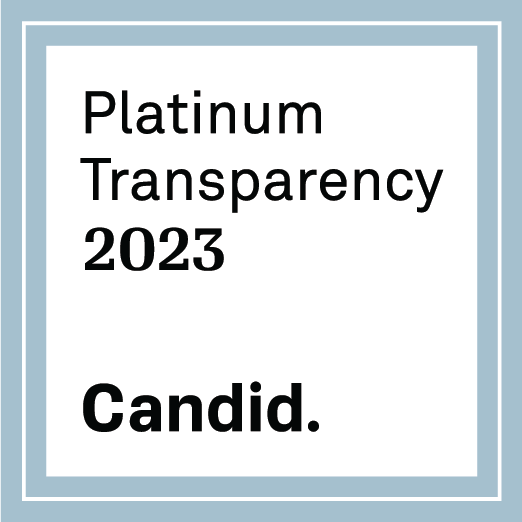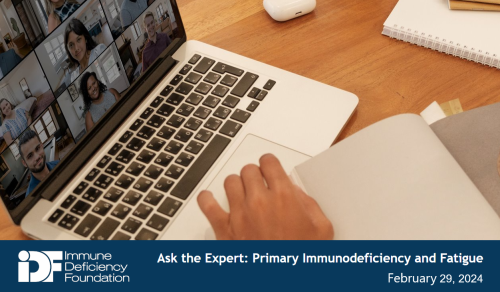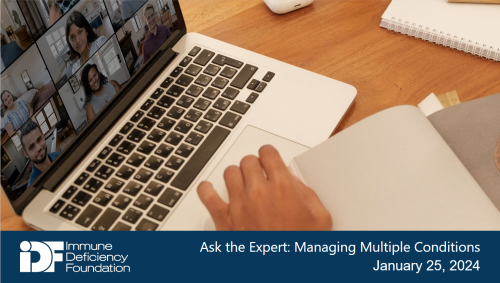
-
Understanding primary immunodeficiency (PI)

Understanding PI
The more you understand about primary immunodeficiency (PI), the better you can live with the disease or support others in your life with PI. Learn more about PI, including the various diagnoses and treatment options.
-
Living with PI
-
Addressing mental health
-
Explaining your diagnosis
- General care
- Get support
- For parents and guardians
-
Managing workplace issues
- Navigating insurance
-
Traveling safely

Living with PI
Living with primary immunodeficiency (PI) can be challenging, but you’re not alone—many people with PI lead full and active lives. With the right support and resources, you can, too.
-
Addressing mental health
-
Get involved

Get involved
Be a hero for those with PI. Change lives by promoting primary immunodeficiency (PI) awareness and taking action in your community through advocacy, donating, volunteering, or fundraising.
-
Advancing research and clinical care
-
Grants
-
IDF surveys
-
Participating in clinical trials
-
Diagnosing PI
-
Consulting immunologist
-
Clinician education

Advancing research and clinical care
Whether you’re a clinician, researcher, or an individual with primary immunodeficiency (PI), IDF has resources to help you advance the field. Get details on surveys, grants, and clinical trials.
-
Grants
What is the second most prevalent chronic health problem in the U.S.? Sinusitis, which affects up to 30 million people annually and results in healthcare costs of $3.4 billion each year.
“It’s a big problem, particularly for those with primary immunodeficiency,” said Dr. Gary Kleiner.
In his October 8 IDF Forum presentation, “Managing Sinus Issues,” Kleiner discussed the anatomy and functioning of the sinuses, symptoms, and diagnosis of sinusitis, predisposing factors to developing sinus trouble, and treatment strategies. Kleiner is an associate professor of clinical pediatrics and associate professor of surgery in the Department of Allergy and Immunology at the University of Miami Miller School of Medicine. He treats patients of all ages.
While some may think that sinusitis is an infection of the sinuses, explained Kleiner, it’s really an inflammation of the sinuses. Sinuses, which are four air-filled sacs near the nose and eyes lined with mucus membranes designed to trap viruses, bacteria, and foreign material for removal, can sometimes become inflamed. The resulting sinusitis causes changes in the mucus, which can be thick or thin, that sometimes cause pain in the face, and even the jaw. The sinus blockage occasionally results in infection.
Sinusitis causes vary from viral infections and allergies to environmental triggers like smoke or hair spray. Other predisposing factors are deviated septum, nasal polyps, cystic fibrosis, dental infections, reflux disease, autoimmune disease, and facial trauma. Notably, primary immunodeficiency is also a factor in developing sinusitis. IgG deficiency, IgA deficiency, and antibody deficiency can all present with sinusitis.
“The immune deficiency itself is not the cause of sinusitis. Often it’s a cold, allergies, and triggers that people may not associate with aggravating the sinusitis. Obviously, if we treat the underlying immunodeficiency, it tends to get better,” said Kleiner, adding that sometimes doctors will increase the amount of gamma globulin products for those who have frequent sinus disease and they respond well.
Sinusitis symptoms include:
- Sinus pain and pressure.
- Low-grade fever.
- Runny nose, nasal discharge.
- Cough, worse at night.
- Breathing through mouth.
- Bad breath.
- Headache and swelling around the eyes.
Understanding the difference between a cold, allergies, and sinusitis is important for treatment. Colds initially present with a sore throat, fever, and body aches, and symptoms clear up after about five days. Allergies result in sneezing and runny nose and typically correlate with the seasons during which pollen is present. Sinusitis presents with pain around the forehead, eyes, and neck, along with post-nasal drip and low energy. Acute sinusitis lasts for about two weeks, whereas chronic sinusitis can last for months or years.
“In general, the immune deficiency population will develop chronic sinusitis and then you get into that cycle with the blockage, the infection, and the pain, so most people with PI will actually have chronic sinusitis, and they may get a cold that will cause an acute infection, and you may need some antibiotics,” explained Kleiner.
If you have sinusitis that is recurrent or chronic, seek allergy testing. Some ways to treat sinusitis symptoms due to allergies or infections include:
- Acetaminophen/ibuprofen.
- Nasal steroid sprays.
- Decongestants.
- Antihistamines.
- Leukotriene receptor antagonists (drugs that have anti-inflammatory effects and open bronchial airways).
- Mucolytic drugs which clear mucus from upper and lower airways.
- Rotating antibiotics and immunoglobulins.
“Unfortunately, there’s no cure for sinus disease so we basically have to think out of the box and, as in everything in medicine, certain people respond better to different therapies, so we have to find the recipe that works for you,” said Kleiner.
Those with chronic sinusitis may want to consider surgery, though in most academic centers, sinus surgery is reserved only for cases in which conservative management, such as antibiotics and allergy treatments, has failed. The classic sinus surgery is functional endoscopic sinus surgery in which the doctor uses a surgical tool inserted into the nostrils to clean out the sinuses. The procedure requires anesthesia but is outpatient.
Another type of sinus surgery is the Propel sinus stent in which a steroid implant is inserted into the sinuses and dissolves over time as it decreases inflammation. Another option is balloon sinuplasty, though its success is somewhat controversial, said Kleiner.
Kleiner said that sinus ventilation and drainage are sometimes more helpful than drugs. He offered up a list of other suggestions those who suffer from sinusitis can try:
- Drinking lots of water.
- Irrigating the sinuses to wash out dirt and mucus (with a device such as a neti pot).
- Using a humidifier.
- Breathing in warm air created by putting a towel over a hot pot of water.
- Taking a prolonged hot shower.
Other options include alternative therapies such as probiotics (which should only be used under a doctor’s supervision), aromatherapy, reflexology, and acupuncture.
Topics
This page contains general medical and/or legal information that cannot be applied safely to any individual case. Medical and/or legal knowledge and practice can change rapidly. Therefore, this page should not be used as a substitute for professional medical and/or legal advice.
Related resources
Sign up for updates from IDF
Receive news and helpful resources to your cell phone or inbox. You can change or cancel your subscription at any time.





The Immune Deficiency Foundation improves the diagnosis, treatment, and quality of life for every person affected by primary immunodeficiency.
We foster a community that is connected, engaged, and empowered through advocacy, education, and research.
Combined Charity Campaign | CFC# 66309




